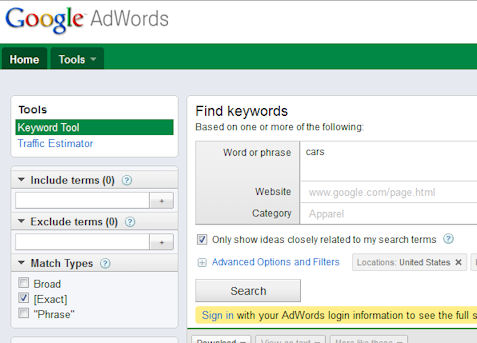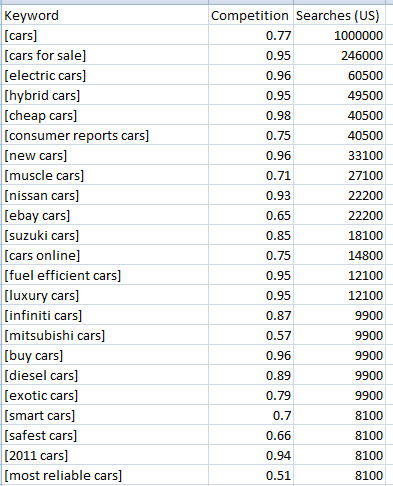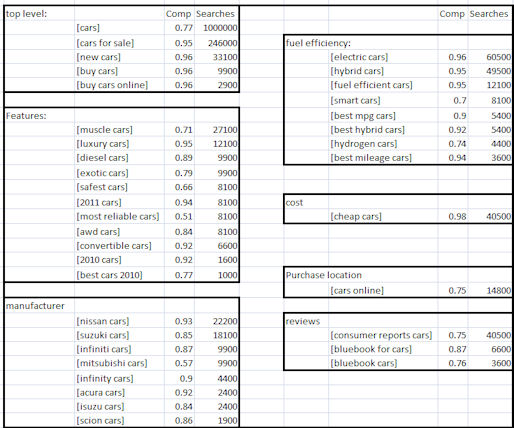Don’t Fall Into The Made-For-SEO Website Trap
There are many things that categorize a Made for SEO website. Large scale sites are prone to fall into this trap, because their scale often has them already competing for a large number of search terms across their many pages. Some of the biggest factors that mark a Made-for -SEO Site are: Thin slicing on […]
There are many things that categorize a Made for SEO website. Large scale sites are prone to fall into this trap, because their scale often has them already competing for a large number of search terms across their many pages.
Some of the biggest factors that mark a Made-for -SEO Site are:
- Thin slicing on search phrases – i.e. pages on the site which are not very distinct from each other, but which were created so they could each compete for minor variations of similar search phrases. Many large sites have this problem. The question that needs to be answered for every page is why does it need to exist, given the other pages already on the site? Capturing additional search traffic is not the right answer!
- Pages created for products not sold on the site – where the intent is to cross sell the visitors on a different product. This is again a problem that some large scale sites have.
- Lack of any real added value content – for example a site that has no distinguishing content from its competitors. Unfortunately, many legitimate e-commerce sites that have failed to build a brand or add any unique content may fall into this category. Score a double minus for using manufacturer supplied descriptions.
- Lack of an authoritative link profile – sites that get no recognition from authoritative sources are at best non-distinct, and could be classified as a Made-for-SEO site.
- No brand searches – if the business has no brand searches taking place then it is questionable whether or not the world at large cares whether they exist.
- Poor user experience – as shown by user engagement metrics that is worse than competition.
- Over commercialized – what balance does the site have between adding value to the users and closing the sale? Note that if you are a major brand with lots of brand searches you get some leeway here. A large part of your added value is the trust people place in your brand. If not, you need to think about what your value add is, and being the site someone found in the search results is not it!
- Affiliate only model – being an affiliate site is not a sin by itself, but if it is combined with several of the other factors above, the use of affiliate links makes it clear that there is no value add in the production of the product or service.
- Reseller only model – this is basically the same as the affiliate only model. It is OK to be a reseller, but given that your value add is not the creation of the product or service you better excel at something else!
These are just some of the factors that go into whether or not a site is a Made-for-SEO website. A more general way to think about it is how the company goes about making decisions. If the only thing considered in making business decisions regarding the site is (a) getting more traffic, or: (b)converting users into sales, then we have a problem.
Let me illustrate how this unfolds with an example of how thin slicing can be done, and what should be done instead of that.
The Basics
One of the greatest marketing inventions in the search engine era is keyword research tools. These tools can give you tremendous insight into the terms used by people when referring to products or services like yours.
When thinking about your site structure and what pages to include, a keyword tool is a great place to start. I will walk through a quick example for a fictional site selling a variety of new cars online, using the Google Adwords Keyword Tool. Here is how I configured my initial query:
Based on this query, I received the following results:
This is a great start, but I can quickly see many things I don’t want to include. There are references to used cars, remote control cars, rental cars, and other unrelated terms. So the first step is to filter that out, which leaves me with something like this:
Now we have a start at a top terms list, and we probably want our pages to cover most of these terms in one fashion or another. We also need to start thinking about our site hierarchy. To do that, we need to take our terms and break them out into categories.
Here is an initial cut at that:
The Finer Points
We have a good start with our categorization, which helps us think about our hierarchy, but before we finalize that we need to make some other decisions.
For example, at the top level do I have different pages for cars, cars for sale, new cars, buy cars, and buy cars online? In a Made-for-SEO site you might do that, but in a “Made for Users” site you would not. There is no reason for those terms to be covered on different pages.
With the feature category, you may well have different pages for many of these terms, such as: muscle cars, luxury cars, diesel cars, exotic cars, safest cars, 2011 cars, most reliable cars, awd cars, convertible cars, and 2010 cars grouped together with best cars 2010.
Each of these pages may also cover additional terms. For example, the “awd cars” page would also be targeted at “all wheel drive cars”, and your “diesel cars” page would also target “diesel fuel cars”.
Even on enterprise level sites, you want to avoid generating large quantities of pages just to pick up search traffic on micro terms. For example, you don’t want to create a page for a car brand that you don’t carry just so you can cross sell them on a different brand.
In the short term, this may generate some sales for you, but in the long term, user dissatisfaction signals will come back to haunt you. This may show in the form of people bouncing off your site and clicking on other search results, or in some other signal, but it will show. This is another clear sign of a Made-for-SEO Site.
Creating large volumes of pages is not by itself bad, as long as you have real content of unique value on each of those pages. If you are the owner of this fictitious car site, and you are not the company that manufacturers the cars you are selling, you need to think long and hard about how you add value.
Some ideas include:
- Develop a recognized brand
- Be the most active on social media
- Offer the best customer service
- Provide the most helpful content and tools
- Create an exceptional user experience
- Develop strong relationships with industry influencers
Summary
There are many other possibilities, but the key thing is to find ways to stand out. I will expand upon these more in the Differentiate or Die panel at SMX West at the end of February.
Sites that are built as Made-for-SEO Sites, such as the content farms I wrote about in The Rise and Fall of Content Farms (three+ weeks before Panda was released by Google!), are in trouble. Their only reason to exist is to get and commercialize SEO traffic, and they prioritize that over the user experience. Trust me when I tell you that this is not a place you want to be.
This does not mean that you can’t build a site that has SEO traffic as its primary source. SEO is not bad, and it is not dead. The important subtlety is whether or not you prioritize short term SEO over content quality and user experience. Made-for-SEO sites do. Don’t go there. The days when those types of sites work will soon be gone.
Contributing authors are invited to create content for Search Engine Land and are chosen for their expertise and contribution to the search community. Our contributors work under the oversight of the editorial staff and contributions are checked for quality and relevance to our readers. The opinions they express are their own.
Related stories
New on Search Engine Land



